For more than 2,000 years, an incredible culture that combines freediving with the sustainable harvesting of marine life has been kept alive by women in Korea

THERE IS A WRITTEN RECORD
from the 6th century that tells of women who would make their living by diving, naked, into the ocean to collect seaweed and shellfish with a small sickle. History calls them the “Jam-Nyeo”, meaning, “diving women” or “Hae-Nyeo” meaning “sea women”. This tradition still exists today.
LEARNING ABOUT A RICH TRADITION
The essential reason that this seemingly “primitive occupation” has persisted for more than 2,000 years is that it is centred around a unique culture. This culture has played an important role, not only in the lives of these women, but also in history.
Most people think that the Hae-Nyeo are just divers who collect seaweed and shellfish to make money, but they don’t understand the culture. I also didn’t understand it properly, even though my grandmother, my aunt and my mother were all Hae-Nyeo in their lifetime.
I decided to work as Hae-Nyeo not for the money, but because of my affection for the spirit of Hae-Nyeo culture. Yet still it wasn’t until I decided to pursue this career that I discovered the considerate behaviour and fair competition that coexist together beautifully in a system which is all their own.
GUIDED BY NATURE
The Hae-Nyeo regard the ocean as their home and as a valuable asset at the same time. Every Hae-Nyeo thinks carefully about the ocean environment and makes as much effort as possible to preserve the marine ecosystem.
Esta historia es de la edición Issue 04 - 2016 de Asian Diver.
Comience su prueba gratuita de Magzter GOLD de 7 días para acceder a miles de historias premium seleccionadas y a más de 9,000 revistas y periódicos.
Ya eres suscriptor ? Conectar
Esta historia es de la edición Issue 04 - 2016 de Asian Diver.
Comience su prueba gratuita de Magzter GOLD de 7 días para acceder a miles de historias premium seleccionadas y a más de 9,000 revistas y periódicos.
Ya eres suscriptor? Conectar
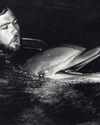
The Sea Specialist: An Interview With Bret Gilliam
Most people learn to crawl before they walk, but there is a man who learned to swim before taking his first steps. Diver, entrepreneur, writer, athlete, maritime specialist – Bret Gilliam is the complete package. Just add water.

The Best Of Diving In Southeast Asia: Explore The Amazon Of The Seas
Southeast Asia encompasses the world’s most biodiverse reefs and some of the best diving anywhere on the planet. From the tiniest and rarest critters to huge fish schools and the biggest pelagics, the region has it all, and there’s something to suit divers of any level.
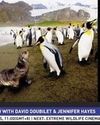
Below With David Doubilet & Jennifer Hayes
Best known for their work with National Geographic, David Doubilet and Jennifer Hayes came together to discuss their work with the youth, and, as Jennifer put it, “submerging with the emerging talent”.
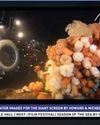
Underwater Images For The Giant Screen
Howard and Michele Hall are best known for their success in underwater IMAX filmmaking.

Journey To Filming For National Geographic Wild Brazil
Cristian is an acclaimed and highly versatile Brazilian wildlife filmmaker who works both underwater and topside.

Breaking The Barrier: The World's Deepest Dive
David Strike shared a brilliant presentation about the history of deep diving and how Lt. George Wookey achieved the world’s deepest dive in 1956 using a surface-supplied rebreather.
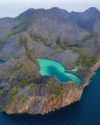
Dive the Golden Land
The Best of Diving In Southeast Asia

OFFICIAL LAUNCH OF BLUE HOPE
Top Session of the Week (14,319 (Views) / 42,831 (Reach)
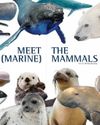
MEET THE (MARINE) MAMMALS
MEET THE (MARINE) MAMMALS

Fashion Faux Pas
What can be done to mitigate the impact of the garment industry on our oceans?